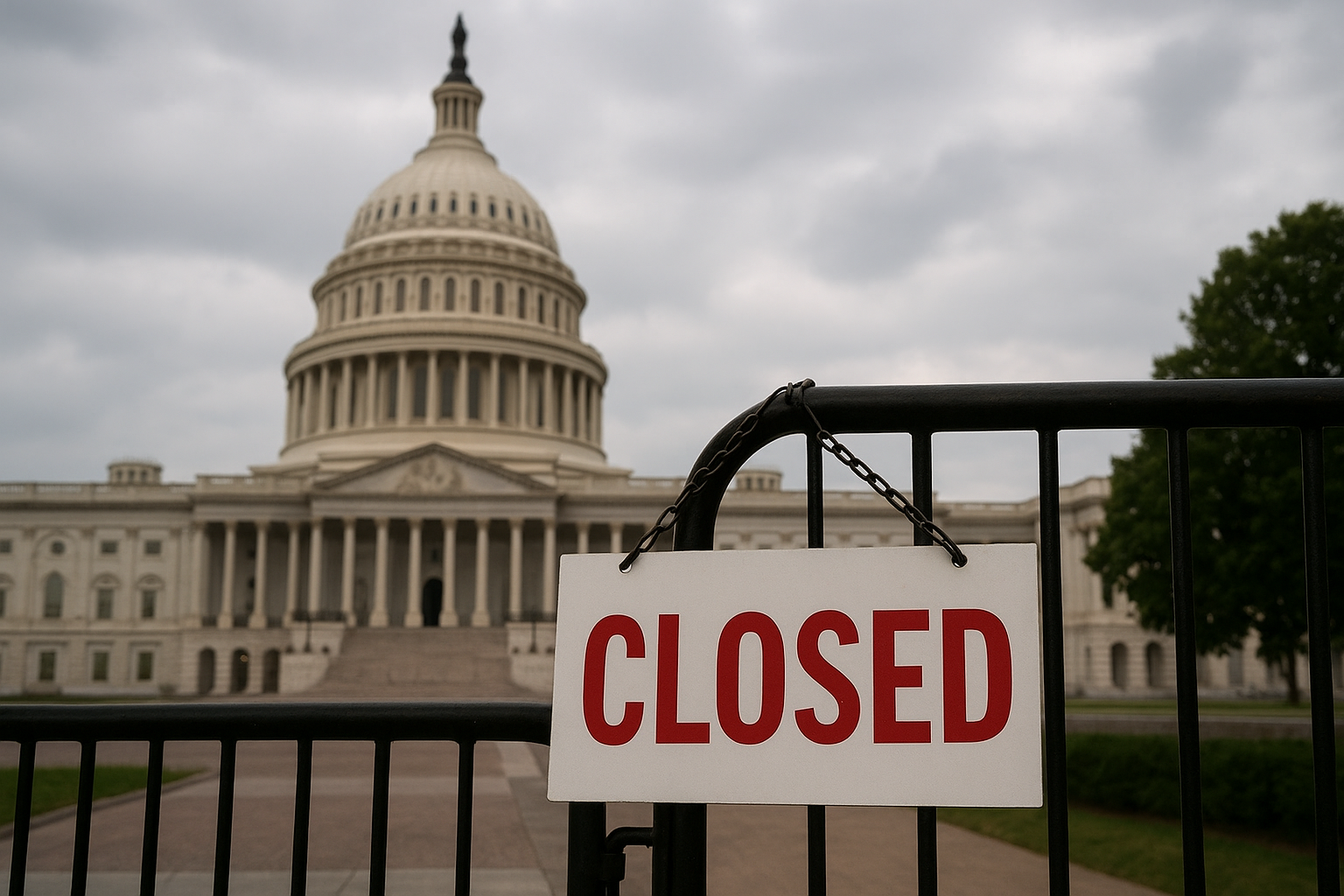Last Updated: Octomber 01, 2025, 10:25 PM

US government shutdown 2025 has commenced, following Congress’s failure to pass funding legislation by the deadline. The impasse between Republicans and Democrats over health care subsidies, Medicaid cuts, and broader spending priorities has culminated in a halt of many federal operations. As of October 1, 2025, this marks the first full shutdown since 2019.
The Breakdown of the Shutdown and Immediate Fallout
The shutdown officially began at 12:01 a.m. on October 1, 2025, once funding lapsed. Both the Republican-proposed stopgap funding bill and the Democratic-backed proposal failed in the Senate, leaving the government without appropriations. The divisions are centered on Democrats’ demands for maintaining Affordable Care Act subsidies and reversing GOP-led Medicaid cuts, which Republicans argue should be handled separately. Roughly 750,000 federal workers may be furloughed daily, costing an estimated $400 million in lost compensation per day. Some agencies have been instructed to prepare for more drastic measures, including mass firings. Health and science agencies are particularly hard hit: 41 % of Department of Health & Human Services staff are slated for furloughs. The CDC may reduce its workforce by 64 %, and NIH by 75 %.
Effects on Agencies, Services & Public Infrastructure
Many federal agencies will suspend or scale back services that rely on discretionary funding. For instance, national parks will remain partly open roads, trails, and outdoor spaces may operate, but buildings, gated lots, and visitor centers will shut down. This decision echoes prior shutdowns, but officials warn of risks like vandalism, environmental damage, and safety concerns with reduced staffing. SNAP food assistance may persist short term, but USDA contingency funds cover roughly one month of benefits; a prolonged shutdown could exhaust that buffer. Essential services such as law enforcement, border security, air traffic control, and military operations continue, though often without immediate pay for employees. US embassies around the world, including in India, have scaled back communication. The U.S. Embassy in India announced it will not post routine social media updates until funding resumes, though urgent security alerts will still be shared. In a striking move, HUD’s official website displayed a partisan banner blaming the “radical left” for the impending shutdown—raising concerns about politicization of government communications.
Economic, Social & Political Implications
The shutdown poses risks to the U.S. credit standing. European rating agency Scope warned it could negatively affect the country’s credit rating, citing rising political polarization and governance instability. Delays and uncertainty could dampen consumer spending and slow growth. The opposition is widespread: about two-thirds of Americans, including nearly half of Democrats, oppose a shutdown, according to recent polling. The public’s frustration is mounting as key services falter and political leaders exchange blame. The Trump administration has signaled it may use the shutdown to consolidate power and make permanent cuts to programs, possibly creating structural changes that survive past the impasse.
Outlook, Resolution Paths & Lessons from History
In past shutdowns, deals were often struck at the eleventh hour through compromises on spending or policy riders. For the 2025 shutdown, the Senate may revisit funding votes though partisan lines remain rigid. Congressional leaders and the White House have met in attempts to find common ground, but progress has been minimal. A prolonged shutdown risks deepening service disruptions, harming vulnerable populations, and sowing long-term institutional damage. The 2018–19 shutdown, for example, lasted 35 days and caused over $11 billion in economic damage. One enduring reform from that round was the Government Employee Fair Treatment Act of 2019, which guarantees retroactive pay for furloughed and excepted employees in any future shutdowns. Still, those payments may arrive late giving workers little relief during the shutdown itself. The political lessons are stark: voters and institutions are increasingly intolerant of gridlock. The risk is that shutdowns become tools of brinkmanship rather than breakdowns. How this one ends could reshape the scope of federal authority, legislative norms, and public tolerance for dysfunction.
- It began on October 1, 2025, after Congress failed to pass a budget agreement
- Many federal agencies and services are suspended or working with reduced staff
- This marks the first full shutdown since 2019
- Political deadlock between Democrats and Republicans
- Disagreements over healthcare subsidies, Medicaid cuts, and spending priorities
- Failure to reach a compromise led to a lapse in federal funding
- Nearly 750,000 federal workers are expected to be furloughed daily
- Essential employees must continue working but may face delayed pay
- Furloughed workers will receive retroactive pay once the shutdown ends
- Agencies like HHS, CDC, NIH, and USDA face major furloughs
- National parks remain partly open with limited facilities
- Programs like SNAP may only function temporarily if the shutdown continues
- Billions of dollars in lost productivity
- Reduced consumer confidence and economic growth
- Potential risk to the nation’s credit rating
- Depends on how quickly Congress and the White House reach an agreement
- Past shutdowns have lasted from a few days to over a month
- Prolonged shutdowns increase disruptions and economic damage
- Yes, furloughed employees are entitled to retroactive pay
- Payments may be delayed, causing temporary financial hardship
- Essential employees also receive back pay once the shutdown is resolved
